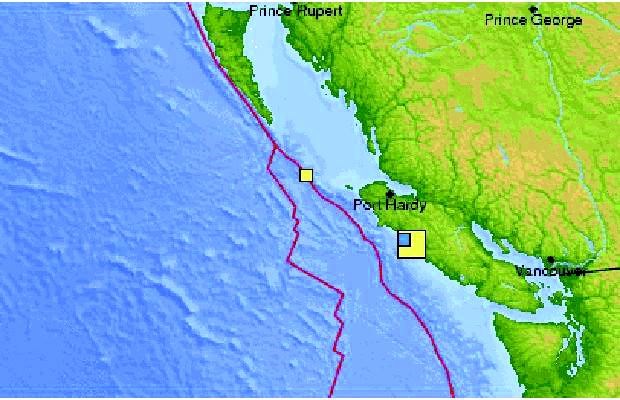The 4.1 tremor was the latest in a series of small aftershocks since a 6.3 quake shook the region last week.
It struck about 50 kilometres off Nootka Sound in Northwestern Vancouver Island at around 4 a.m. on Thursday morning, said John Cassidy, a seismologist with Natural Resources Canada, based in Victoria.
That's roughly the same spot as the larger earthquake last Friday, which shook buildings in downtown Vancouver and was felt as far away as Kelowna and parts of Washington state.
There are no early reports of this earthquake being felt, and no damage is expected, he said.
No tsunami warning has been issued, Natural Resources Canada reported on its website.
"It's a perfect reminder for all of us that we live in a very active earthquake zone," Cassidy said.
This morning's quake is likely an aftershock of the 6.3 earthquake on Sept. 9, he said, adding that there were actually more than a hundred aftershocks throughout the region following Friday's relatively big shake.
"Almost all of them were really tiny," he said, adding that the majority of them waned by Sunday evening.
He said this recent series of quakes is not directly linked to the well-documented "big one," which could hit the region at some point within the next century.
These small quakes are caused by tension between two plates, the Explorer plate and the Juan de Fuca plate, which are both moving toward Vancouver Island, but at different speeds, he said.
These are much different than a subduction earthquake, which is caused by a large-scale thrust between competing continental and ocean plates, like the recent quake that caused devastation in Japan, Cassidy said.
Those pack "a lot of movement," he added.
It's been 311 years since the latest "big one" on the west coast, Cassidy said, adding that on October 20, the second Great British Columbia Shakeout will be taking place.
The provincewide earthquake drill is a good tool to remind people how to prepare for earthquakes, which will inevitably happen, whether we're ready or not, he said.
Earlier this year more than 470,000 British Columbians took part in the first Shakeout.
Cassidy is expecting more people to participate this fall, when B.C's event coincides with Shakeouts in Washington state, Oregon and California.


